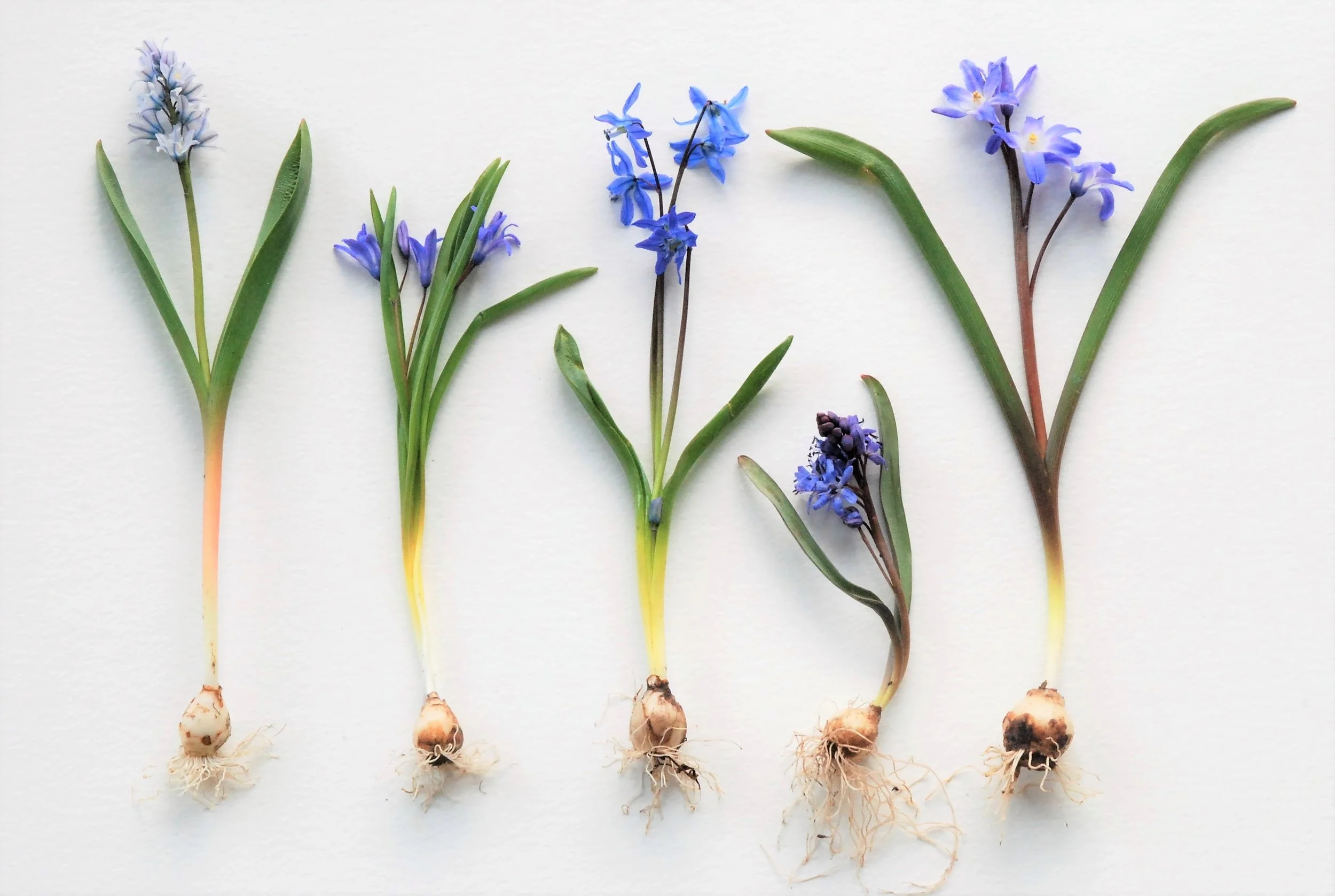The little blue bulbs: part II
Upon seeing the first flowers of Chionodoxa in spring, the garden writer Elizabeth Lawrence is reminded of “the Lydians returning ‘from the hunting heavy laden’ who must have followed trails that in spring would be bordered with these very flowers.” The contrast of the blue flowers, she writes, against the melting snow banks should have riveted the hunters. Such was my feeling upon the sight of Scilla bifolia in Uludağ, Turkey, and Scilla nana in Psychro Cave, Crete, Greece. Their common name glory of the snow was evident because the flowering bulbs emerged from melting snow.
Scilla nana (syn. Chionodoxa nana) not far from the snowbanks of Zeus’s Cave in Crete.
Chionodoxa is frequently confused with Scilla for good reasons. Superficially they have the same diminutive size, are early to flower, and have similar blue violet and white colors. Traditionally the way to tell Chionodoxa apart from Scilla was the former’s white cone that enclose the stamens in the center of the flower. In a rare instance of taxonomy making things easier for us gardeners to stomach, Chionodoxa is currently considered the same as Scilla and does not accord its own genus. Interestingly the morphological argument for sinking Chionodoxa into Scilla rested on their chromosome numbers and seed structure. Relying on floral traits especially in bulbous genera has proven to be problematic.
Research revealed that Chionodoxa and Scilla have the same base chromosome number (x=9) while the rest of Scilla show more variation in the numbers. Seeds of both genera have elaisomes, oil-rich appendages that aid in dispersal especially by ants. They are derived from the same tissue in the seed coat. Strengthening the loss of Chionodoxa as a distinct genus is the presence of hybrids between Chionodoxa and Scilla, known as x Chionoscilla. Intergeneric hybrids in the tribe Hyacintheae are absent, and even interspecific Scilla hybrids are rare. Molecular work has confirmed these similarities as Chionodoxa and Scilla are tightly clustered within each other.
If the past confusion between Chionodoxa and Scilla wasn’t enough, the species themselves have been mixed. However, paying closer attention to some key floral traits will clarify which is which. Chionodoxa (Scilla) luciliae has less, but larger upward facing flowers more verging on dusky pale purple with faded white eye. Chionodoxa (Scilla) sardensis has the same upward facing flowers albeit in the intense true gentian blue with blurry white eyes. Chionodoxa (Scilla) forbesii looks the same with the distinct central white zone. This species may be misidentified with C. (Scilla) siehei with the difference being larger and more flowers in blue violet than true blue. All these subtle differences may not mean much to the casual observer - however they can only enhance our admiration at the way their blue hues just sparkle with springtime.
For additional reading, consider:
David, J (2018) Why are we losing Chionodoxa? The Plantsman 17(1): 26-27.







